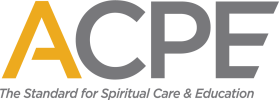Policy and Process
- The accredited program must submit the Request for Accreditation Review and upload all required materials to the center’s portfolio a minimum of 45 days before the first unit of Certified Educator CPE will commence.
- Provisionally accredited and accredited programs may add Certified Educator CPE at any time during the accreditation cycle.
- Materials will be reviewed within 30 days of assignment to an accreditation reviewer.
- If materials are satisfactory, a letter of provisional accreditation will be issued by the assigned assigned commissioner.
- If inadequacies are found, a letter outlining the inadequacies will be issued. The letter can either:
- issue provisional status with a timeline regarding submission of the corrections; or
- deny provisional status and outline the inadequacies (Certified Educator CPE training cannot begin until provisional status is granted).
- The addition of Certified Educator CPE ordinarily does not require a site visit, but one may required based on its review of the proposal.
- A program may begin Certified Educator CPE once it has received a letter of provisional approval from their assigned commissioner.
- Provisional approval and final action is subject to review by the Accreditation Commission. Any issues identified in the granting of provisional status must be satisfactorily addressed prior to review by the Accreditation Commission
- Final action is by the Commission. Commission actions include one of the following:
- approve the addition of Certified Educator CPE; or
- deny the request and provide the basis for denial.
Required Materials
A proposal, in lieu of a self-study, that includes:
- Rationale for this new program;
- Congruence of proposal with mission and goals of the program;
- Summary of Accreditation history and CPE at the program;
- Survey of prospective student enrollment;
- Provision for national faculty, financial and support resources, including, but not limited to, office space, participation in and time to attend outside peer groups, and travel to training meetings;
- Copy of Certified Educator student agreement(s)/contract template(s):
- delineation of supervisory involvement of primary educator,
- clear delineation of the administrative and educational mechanisms by which the Certified Educator CPE student is related to the Accredited Center and the primary educators(s), information about benefits, stipend, responsibilities, etc.
- Certified Educator CPE student handbook or pertinent sections of the master student handbook containing:
- Detailed curriculum that demonstrates progress toward certification, including a curriculum crosswalk with the Certified Educator competencies and a syllabus,
- Demonstration of compliance with ACPE standards
Hybrid Model for CEC Programs
A hybrid model is defined as a setting where the CEC is in person with a group of students and the ACPE Certified Educator who is running the unit and overseeing the work of the CEC is in a different location and is virtual for a majority of the time.
Requirements
- A program must be accredited for Certified Educator CPE.
- If the proposed site is not accredited, it must first apply for and be granted provisional accreditation before a CEC may function there.
- It needs to be clear that the ACPE Certified Educator is running the unit and is responsible for education and evaluations. The role of the CEC will be developed in accordance with the Progressive Autonomy in Educating Under Supervision that is outlined in the Certification Manual.
- While the group is regularly meeting in person and the ACPE Certified Educator is often joining virtually, it is also expected that the ACPE Certified Educator have a physical, in-person presence at the site with the students at various times during the unit. The number and length of each in person visit shall be determined by the ACPE Certified Educator with special attention to the developing role of the CEC, i.e. more in person visits at the start of the CEC’s process, when a CEC is in Phase IA, with a gradual shift as the CEC advances through to Phase IB, and then on to Phase II of the Certification Process. It is essential that the ACPE Certified Educator be seen as the educator of the group.
- The design of the CEC program, including how decisions are made related to the physical in-person time of the educator, should be documented in the program’s accreditation portfolio. Special attention should be given to the ensuring that the role of the CEC does not grow too fast too soon, but rather it should grow when the CEC has demonstrated readiness to move forward.
- A program must include additional items in their portfolios:
- Standard 1, Indicator E: Policy and utilization for video conferencing and how it serves to fulfill educational goals.
- Standard 5, Indicator D: Explain the role of the CEC in the greater institution. Do they have responsibilities outside of being a CEC? If so, what are they and how do they impact their ability to move through the CEC process? What support does the center provide for the CEC?
- Accredited program and ACPE Certified Educators who are utilizing this model should consult with their assigned Accreditation Commissioner and the CEC’s Certification Commission Reviewer to ensure that both the program and the CEC are together on the path for success.


